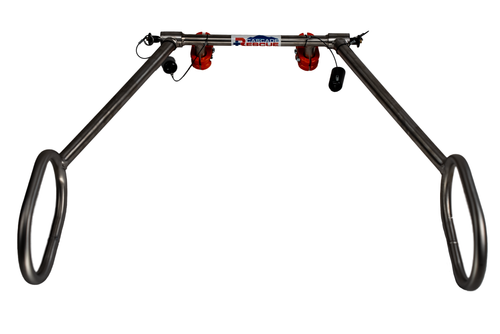Cascade Rescue Litter Flotation System
Designed to fit all Cascade Professional and Advanced Series Litters with Daisy Chain. The system is self-righting, maintaining the litter in a head-high horizontal position for the ease of loading. Capable of floating the litter, patient and at least one rescuer. Easily attached and removed for storage. This Flotation System is ideal for ocean, lake and swiftwater rescue. Will also fit most tube frame litters of other manufacturers.
System weight: 4.9lbs (2.2kg)
Dimensions: The foam is 6” (15.25cm) in diameter. The long sections of the foam are 63” (160cm) and the head section is 12” (30.5cm).
Bouyancy: The system is designed to float a litter and patient in a slightly “head up” orientation. It will also partially float an attendant positioned to the side or end of the litter. Depending upon the distribution of the weight it will adequately float up to 400lbs (180kg)
Construction: The external cover of the system is 600 denier waterproof nylon pack cloth. Internal foam is 1.2 pound density closed cell polyethylene foam. It will not absorb water. The strap segments are 1” heavy duty polypropylene webbing with Velcro.
-
Litter Flotation
River crossing with stretcher.
1. The stretcher flotation system is very capable of floating the stretcher and patient in a head high horizontal position. It’s max load is 180kg
2. The patient will be submerged in water.
3. The stretcher handles have to be removed when using the floatation system.
4. The stretcher floatation system can be used in conjunction with the stretcher wheel.
HOWEVER! when the water level is over the stretcher wheel it becomes very unstable. It can and will CAPSIZE the stretcher. The cause of this is the buoyancy in the stretcher wheel, it’s very impressive !
5. The vacuum mattress in the stretcher does add some more floatation, but can’t be solely relied on.
6. In water above your knee or fast moving shallow water the wheel should be removed and the stretcher manually carried.
7. **Most Importantly **Patients MUST NOT be tied into the vacuum mattress or the stretcher during in-water operations.
8. Back rope the stretcher with floating rope during in-water operations.
9. It’s better to carry the stretcher in a team wedge formation when making a river crossing.
Many Thanks
Dublin and Wicklow Mountain Rescue Team.














